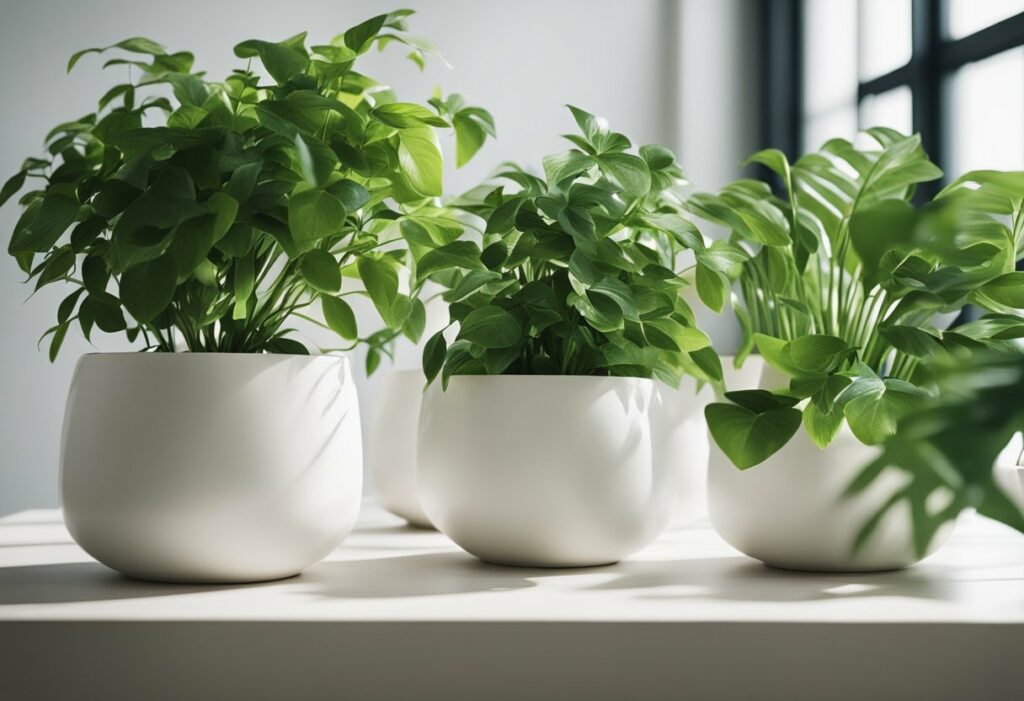Indoor Plants: Elevating Your Interior Design Game
If you’re looking for a way to add a touch of nature to your home, incorporating indoor plants into your interior design is a great way to do it. Not only do plants add a pop of greenery to your space, but they also come with a host of health benefits. From improving air quality to reducing stress levels, indoor plants are a versatile and affordable way to elevate your home décor.
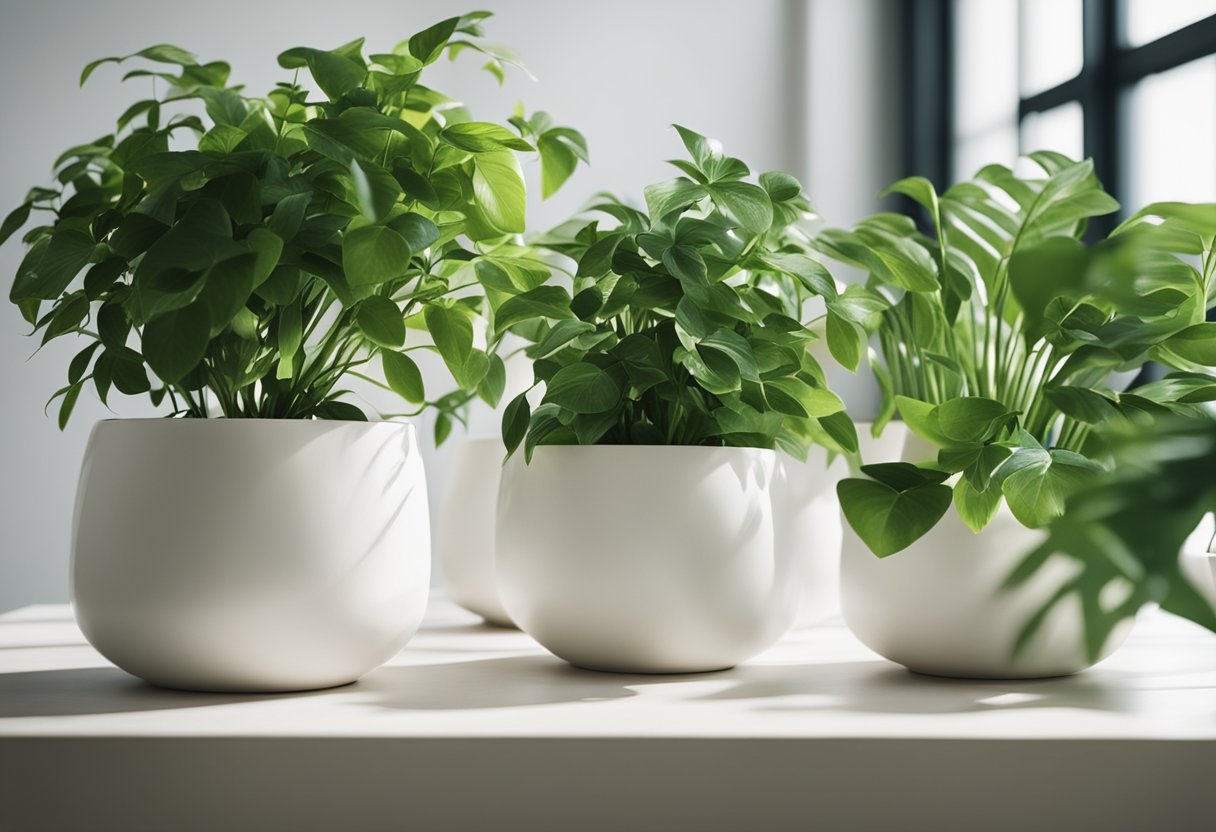
When it comes to incorporating plants into your home design, there are endless possibilities. You can choose from a variety of plant types, sizes, and textures to create a look that’s uniquely your own. Whether you’re looking to create a lush indoor jungle or simply add a few small plants to your space, there’s an option out there for every style and budget.
Of course, caring for indoor plants can be a bit intimidating if you’re new to the game. But with a little bit of research and some trial and error, you’ll be a plant pro in no time. From choosing the right soil to finding the perfect spot for your plants to thrive, there are a few key things to keep in mind. But with a little bit of effort, you’ll be rewarded with a beautiful, green space that’s sure to impress.
Key Takeaways
- Incorporating indoor plants into your home décor is a great way to add a touch of nature to your space and improve air quality.
- There are endless possibilities when it comes to incorporating plants into your interior design, regardless of your style or budget.
- Caring for indoor plants can be a bit intimidating, but with a little bit of research and effort, you can create a beautiful, green space that’s sure to impress.
Incorporating Plants into Home Design
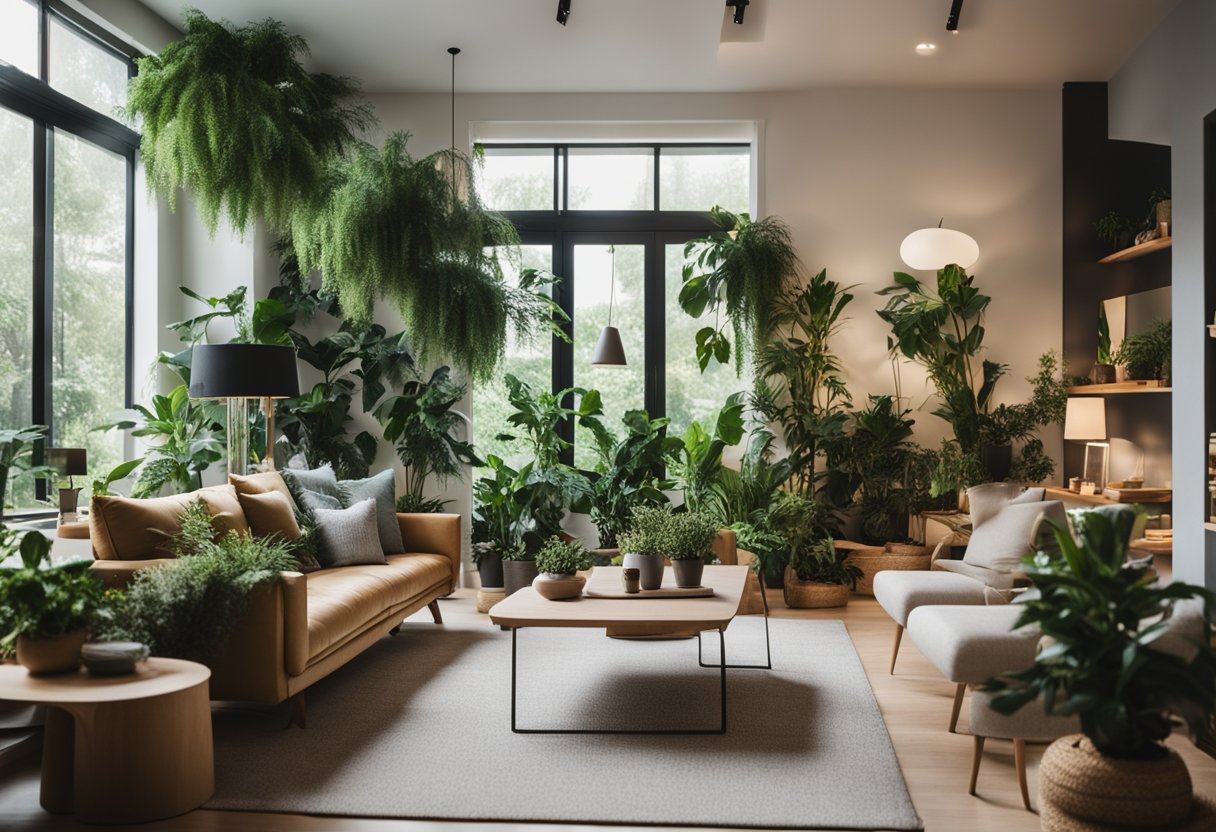
If you’re looking to add some greenery to your home, incorporating indoor plants into your interior design is a fantastic way to do so. Not only do plants add a pop of colour and texture, but they also have numerous health benefits. In this section, we’ll cover everything you need to know about incorporating plants into your home design.
Selecting the Right Plants for Your Space
When selecting plants for your home, it’s important to consider the amount of light and space available. For low-light areas, snake plants, ferns, and philodendrons are great options. Palms and figs thrive in bright, indirect light, while succulents and cacti require direct sunlight.
It’s also important to consider the size of the plant and how it will fit into your space. If you’re short on space, consider a small planter or a corner plant. For larger areas, a fiddle leaf fig or kentia palm can make a great focal point.
Design Principles with Plants
When incorporating plants into your interior design, it’s important to consider design principles such as balance, colour, and texture. Use planters and shelves to create visual interest, and mix and match different textures and colours for contrast.
Plants can also be used as a focal point in a room. A large plant such as a zz plant or peace lily can be used as a centrepiece on a coffee table or as a divider between spaces.
Creative Plant Display Ideas
There are endless ways to display indoor plants in your home. Consider using plant stands or vessels to elevate your plants and add some height to your space. Trailing plants such as rhipsalis and devil’s ivy can be hung from baskets or shelves to create a stunning visual effect.
For a minimal style, consider using plants as a focal point in an otherwise simple room. A single plant such as a snake plant or corn plant can add some visual interest without overwhelming the space.
In summary, incorporating plants into your home design is a fantastic way to add some greenery and improve your overall well-being. By selecting the right plants for your space, considering design principles, and using creative display ideas, you can create a beautiful and healthy living space.
Caring for Indoor Plants
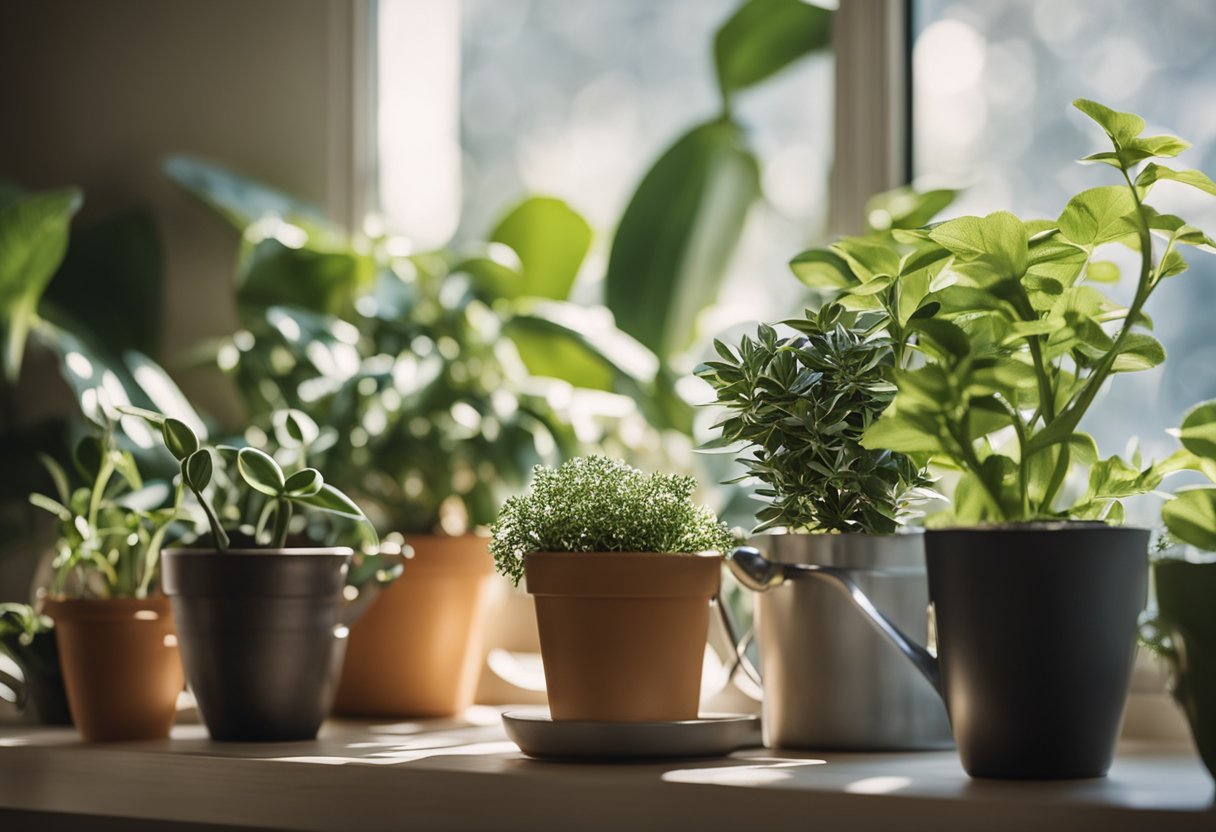
Indoor plants not only add beauty to your home decor but also purify the air and create a calming atmosphere. However, caring for indoor plants can be challenging if you don’t have the right knowledge. In this section, we will guide you on how to care for your indoor plants and optimise their health.
Optimising Plant Health
To optimise the health of your indoor plants, you need to provide them with the right environment. Here are some tips to help you keep your plants healthy:
- Soil: Use high-quality soil that is well-draining and rich in nutrients. Avoid using garden soil as it can contain pests and diseases that can harm your indoor plants.
- Water: Water your plants regularly but avoid overwatering as it can cause root rot. The frequency of watering depends on the type of plant, the size of the pot, and the climate. Check the soil moisture level before watering and ensure that the pot has proper drainage.
- Light: Most indoor plants require bright, indirect light. However, some plants such as Boston fern and African violets prefer low light conditions. Place your plants near a window that receives bright, indirect light or use artificial grow lights.
- Humidity: Indoor plants thrive in a humid environment. You can increase the humidity around your plants by placing a tray of water near them or using a humidifier.
- Temperature: Most indoor plants prefer a temperature range of 18-24°C. Avoid placing your plants near air conditioning vents or drafty areas.
The Role of Environment
The environment plays a crucial role in the health of your indoor plants. Here are some factors to consider:
- Purify the air: Indoor plants can purify the air by removing toxins and pollutants. Some of the best air-purifying plants include bird’s nest ferns and corn plants.
- Indoor gardening: Indoor gardening is a great way to grow your own herbs and vegetables. You can use containers or hydroponic systems to grow plants indoors.
- House plant for interior designers: Interior designers often use house plants to add a natural touch to their designs. Some popular house plants for interior designers include snake plants, spider plants, and peace lilies.
- Drainage: Proper drainage is essential for the health of your indoor plants. Make sure that the pot has drainage holes and use a saucer to catch excess water.
- Knowledge: Having knowledge about your plants’ needs is crucial for their health. Research the type of plant you have and its specific requirements.
- Climate: The climate can affect the health of your indoor plants. Some plants prefer a humid environment, while others prefer a dry environment. Choose plants that are suitable for your climate.
Frequently Asked Questions
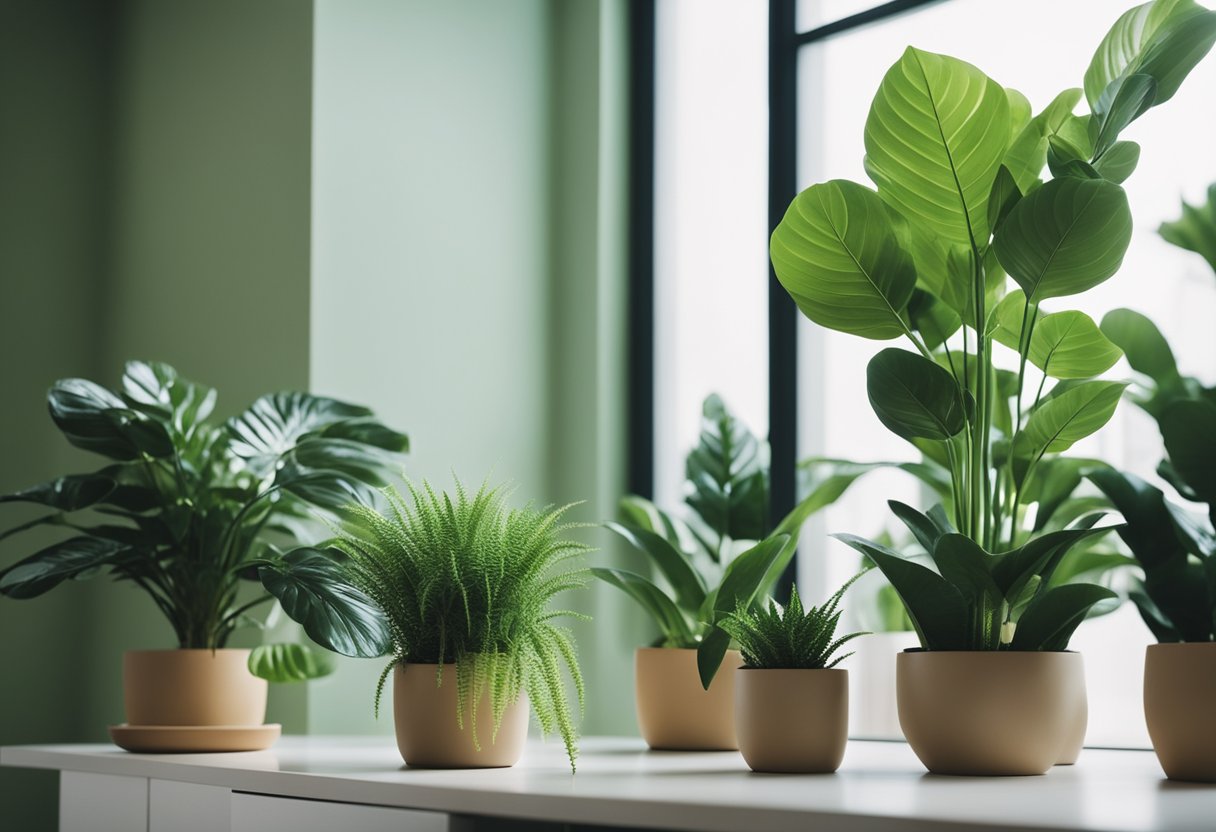
How can I creatively incorporate small indoor plants into my home decor?
Small indoor plants are great for adding a touch of greenery to your home decor without taking up too much space. You can creatively incorporate them by placing them in unique planters, such as hanging planters or geometric terrariums. You can also group them together on a shelf or windowsill to create a mini indoor garden. Another idea is to use them as a centerpiece for your dining table or coffee table.
What are the top large indoor plants that can make a statement in interior design?
Large indoor plants can make a bold statement in your interior design. Some of the top options include the fiddle leaf fig, rubber plant, and bird of paradise. These plants have large, dramatic leaves that can add a tropical or exotic vibe to your space. They can be placed in a corner to fill up empty space or used as a focal point in a room.
Could you suggest some modern ways to style my home with indoor plants?
There are many modern ways to style your home with indoor plants. One popular trend is to use macrame plant hangers to suspend your plants from the ceiling or wall. Another idea is to use minimalist plant stands to elevate your plants and create a sculptural effect. You can also mix and match different types of plants to create a dynamic and interesting display.
What are the best plants to enhance the aesthetic of my living room?
The best plants to enhance the aesthetic of your living room will depend on your personal style and preferences. However, some popular options include snake plants, pothos, and peace lilies. These plants are easy to care for and can add a pop of green to any living room.
Which interior design styles are most complemented by the addition of indoor plants?
Indoor plants can complement a variety of interior design styles, from bohemian to modern. In bohemian style, plants are often used to create a natural, earthy vibe. In modern style, plants can add a touch of softness and warmth to a space. They can also complement minimalist and Scandinavian design styles by adding a pop of color and texture.
Why should I consider integrating plants into my interior design scheme?
Integrating plants into your interior design scheme can have many benefits. Plants can improve air quality, reduce stress levels, and increase productivity. They can also add a touch of nature to your space and create a calming atmosphere. Plus, they are a great way to add color and texture to your decor without breaking the bank.

